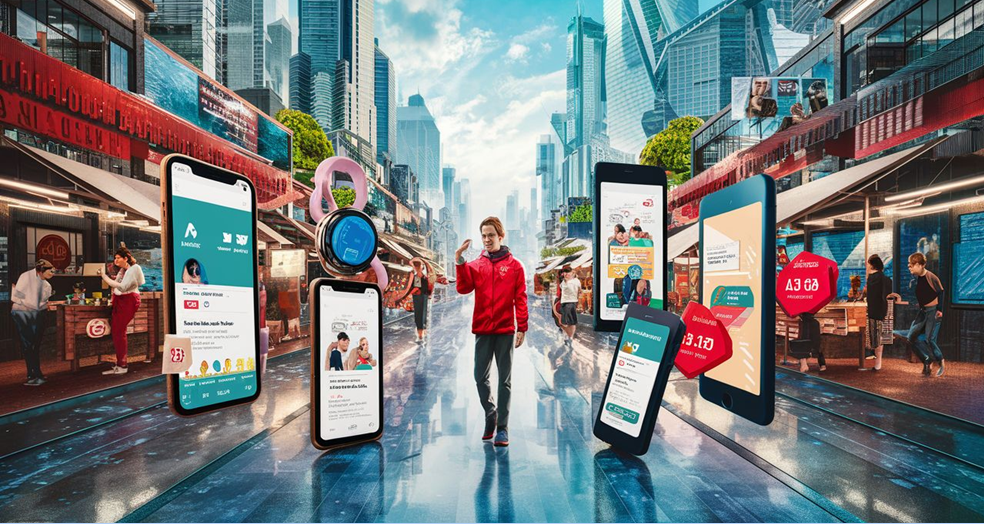In the fast-paced digital era, mobile marketing has emerged as a powerful tool for businesses to connect with their audience on the move. As smartphones become an integral part of our daily lives, companies are adopting innovative mobile marketing strategies to reach customers wherever they are. In this article, we will explore effective techniques, share real-life examples, and delve into the importance of optimizing mobile marketing strategies to reach customers seamlessly.
1. The Evolution of Mobile Marketing
1.1: Understanding the Shift
As technology evolves, so do consumer behaviors. The shift towards mobile devices for internet access has been monumental. Businesses that recognize this trend can leverage mobile marketing strategies to reach customers effectively.
1.2: Importance of Mobile-First Approach
To truly succeed in the mobile realm, businesses must adopt a mobile-first approach. This means designing websites, content, and campaigns with mobile users in mind from the start. By doing so, companies can ensure a seamless and engaging experience, maximizing the impact of their mobile marketing strategies to reach customers.
2: Key Mobile Marketing Strategies to Reach Customers
2.1: Responsive Web Design
A critical aspect of mobile marketing is ensuring that your online presence is accessible and visually appealing on various devices. Implementing a responsive web design is key to delivering a consistent user experience across smartphones, tablets, and desktops. This strategy enhances the effectiveness of mobile marketing to reach customers irrespective of the device they use.
2.2: Location-Based Marketing
Utilizing location-based services can be a game-changer in mobile marketing strategies to reach customers. Apps like Foursquare and Google Maps allow businesses to target users based on their location, sending relevant promotions and notifications. For instance, a coffee shop can send a special discount coupon to users who are in close proximity, enticing them to visit.
2.3: SMS Marketing
The timeless short message service (SMS) remains a powerful tool in the mobile marketing arsenal. Craft targeted and engaging messages that resonate with your audience, ensuring your brand stays top-of-mind. Be mindful of the frequency of messages to avoid appearing intrusive; effective SMS marketing is about quality, not quantity.
2.4: Mobile Apps and Push Notifications
Developing a mobile app provides a direct channel for businesses to connect with their audience. Push notifications offer a way to engage users in real-time, providing updates, promotions, and personalized content. Starbucks, for instance, excels in using its mobile app to offer exclusive deals, loyalty rewards, and a seamless ordering experience.
3. The Role of Social Media in Mobile Marketing
3.1: Mobile-Optimized Social Platforms
Social media platforms have embraced mobile optimization, making them a fertile ground for mobile marketing strategies to reach customers. Ensure your content is tailored for mobile consumption, with visually appealing images and concise messages. Instagram and TikTok are excellent examples of platforms where visually appealing content captures user attention effectively.
3.2: Influencer Collaborations
Collaborating with influencers who have a strong mobile presence can amplify your mobile marketing efforts. Influencers often have a dedicated and engaged following, making them valuable partners to promote your products or services. Identify influencers whose audience aligns with your target demographic for optimal results.
4: Analytics and Continuous Improvement
4.1: Leveraging Data for Optimization
An often overlooked but crucial aspect of mobile marketing is analytics. Utilize data insights to understand user behavior, preferences, and engagement levels. By constantly analyzing data, businesses can refine their mobile marketing strategies to reach customers more effectively over time.
4.2: A/B Testing for Campaign Optimization
Implement A/B testing to compare different versions of your mobile marketing campaigns. Whether it's adjusting the call-to-action, modifying visuals, or refining the messaging, A/B testing allows you to identify what resonates best with your audience. This iterative process ensures ongoing optimization and improvement.
Conclusion
In conclusion, mobile marketing strategies to reach customers are indispensable in today's digital landscape. Businesses must adapt to the mobile-first mindset, employing responsive designs, location-based targeting, SMS marketing, and mobile apps to stay connected with their audience. Social media and influencer collaborations further enhance the reach of mobile marketing efforts. By leveraging analytics and continuous improvement through A/B testing, companies can refine their strategies and create meaningful connections with customers on the go. Embrace the mobile revolution, and your brand will thrive in the ever-evolving digital ecosystem.








